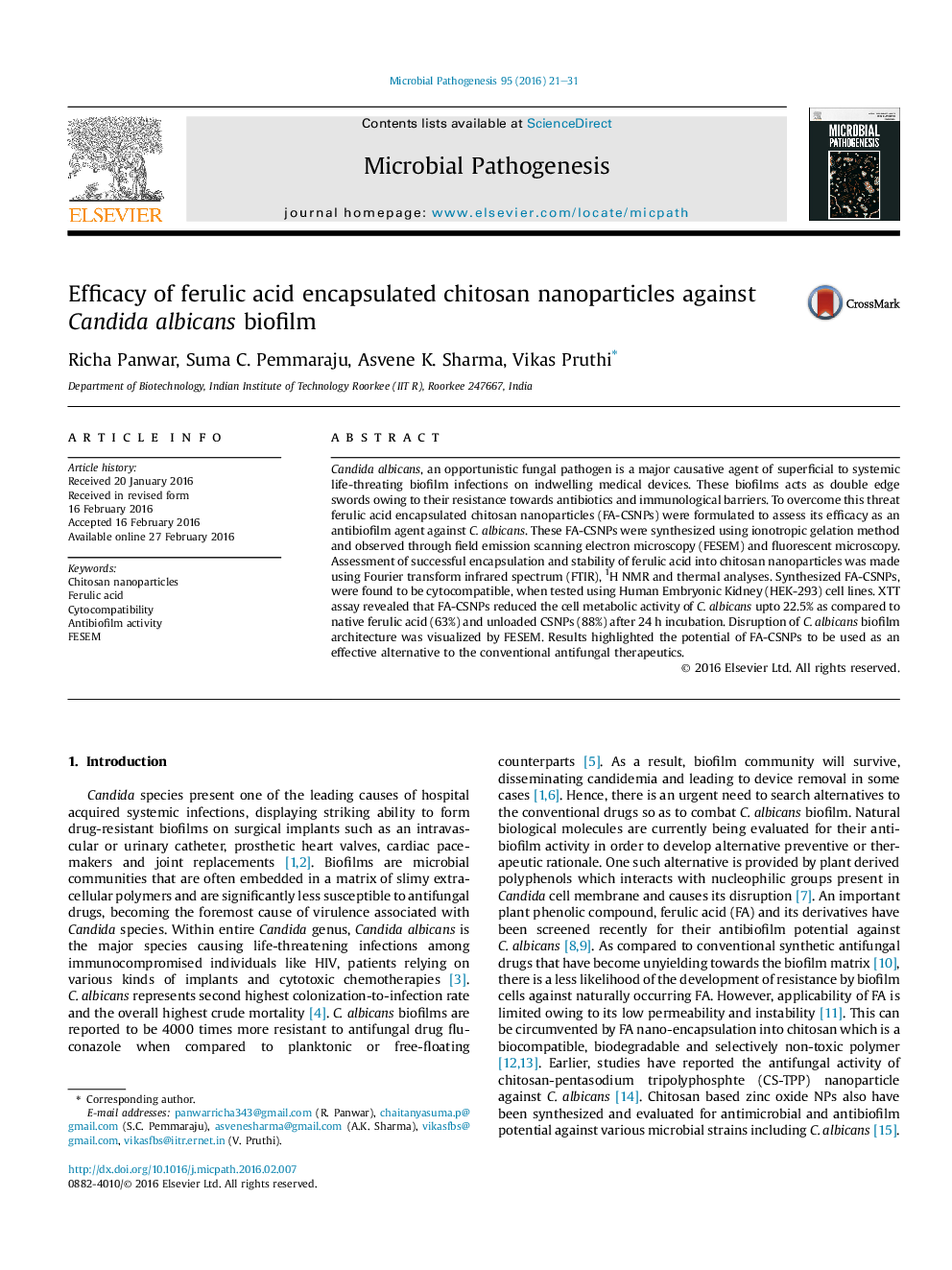| Article ID | Journal | Published Year | Pages | File Type |
|---|---|---|---|---|
| 3416234 | Microbial Pathogenesis | 2016 | 11 Pages |
•Cost effective and simple preparation of ferulic acid-chitosan nanoparticles (NPs).•Size, morphology and other physico-chemical characterization of NPs.•NPs exhibited enhanced cytocompatibility compared to native ferulic acid.•Reduced Candida albicans biofilm cell viability up to 22.5%.•Complete damage of cell due to plasmolysis as visualized using FE-SEM.
Candida albicans, an opportunistic fungal pathogen is a major causative agent of superficial to systemic life-threating biofilm infections on indwelling medical devices. These biofilms acts as double edge swords owing to their resistance towards antibiotics and immunological barriers. To overcome this threat ferulic acid encapsulated chitosan nanoparticles (FA-CSNPs) were formulated to assess its efficacy as an antibiofilm agent against C. albicans. These FA-CSNPs were synthesized using ionotropic gelation method and observed through field emission scanning electron microscopy (FESEM) and fluorescent microscopy. Assessment of successful encapsulation and stability of ferulic acid into chitosan nanoparticles was made using Fourier transform infrared spectrum (FTIR), 1H NMR and thermal analyses. Synthesized FA-CSNPs, were found to be cytocompatible, when tested using Human Embryonic Kidney (HEK-293) cell lines. XTT assay revealed that FA-CSNPs reduced the cell metabolic activity of C. albicans upto 22.5% as compared to native ferulic acid (63%) and unloaded CSNPs (88%) after 24 h incubation. Disruption of C. albicans biofilm architecture was visualized by FESEM. Results highlighted the potential of FA-CSNPs to be used as an effective alternative to the conventional antifungal therapeutics.
Graphical abstractFigure optionsDownload full-size imageDownload as PowerPoint slide
